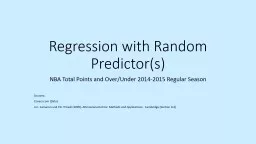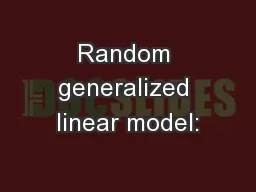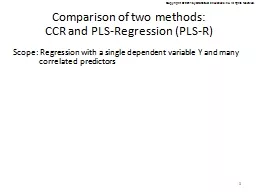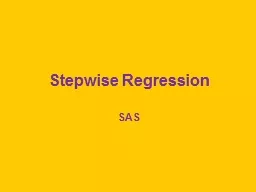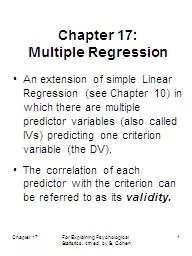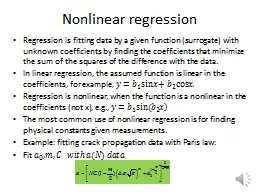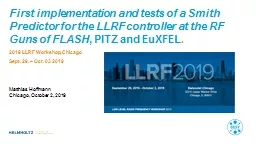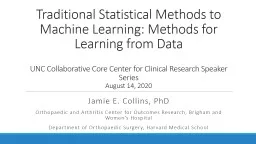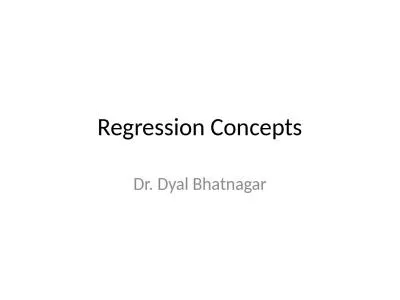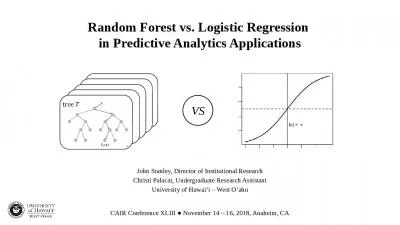PPT-Regression with Random Predictor(s)
Author : sherrill-nordquist | Published Date : 2017-08-25
NBA Total Points and OverUnder 20142015 Regular Season Sources Coverscom Data WH Greene 1997 Econometric Analysis 3 rd Ed PrenticeHall Stochastic Regressors Analysis
Presentation Embed Code
Download Presentation
Download Presentation The PPT/PDF document "Regression with Random Predictor(s)" is the property of its rightful owner. Permission is granted to download and print the materials on this website for personal, non-commercial use only, and to display it on your personal computer provided you do not modify the materials and that you retain all copyright notices contained in the materials. By downloading content from our website, you accept the terms of this agreement.
Regression with Random Predictor(s): Transcript
Download Rules Of Document
"Regression with Random Predictor(s)"The content belongs to its owner. You may download and print it for personal use, without modification, and keep all copyright notices. By downloading, you agree to these terms.
Related Documents

